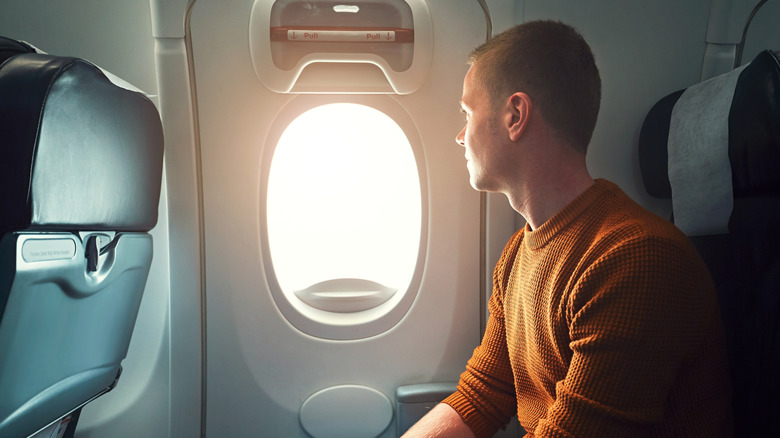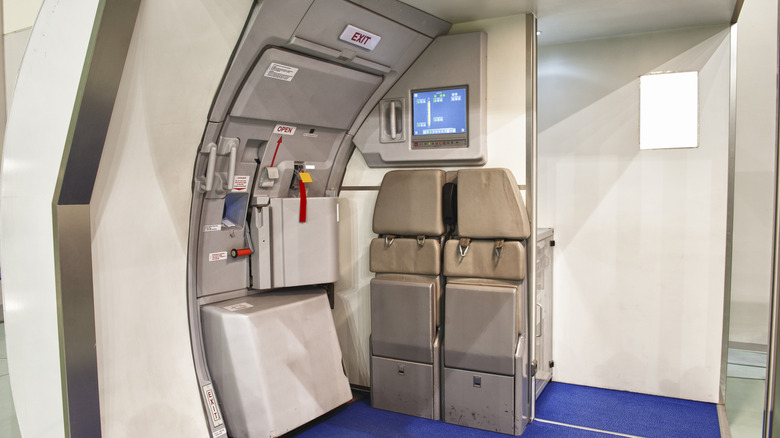The Exit Row Perk That Isn't What Most Travelers Think (And Why It Matters Mid-Flight)
Lots of us have probably felt pretty clever or lucky if we've wound up in the exit row on an airplane, which flight attendants say is ideal for surviving ultra-long-haul flights. There's more legroom, no annoying person leaning their seat back into your face, and plenty of room to stand up and get out even if you're the one next to the window. And then there's the, "Are you ready, willing, and able to assist in the event of an emergency?" question you might get asked on a U.S. flight. You could say no and get moved to another seat, but if you say yes, then you're agreeing to help if something goes wrong mid-flight. If tragedy strikes, you'll have a lot more to worry about than feeling less grubby during and after the flight.
While each U.S.-based airline lists its exit row requirements in a slightly different way — United Airlines, American Airlines, Delta Airlines, etc. — Cornell Law School details the full, federal, legal stipulations for sitting in an exit seat on an airplane. Per the Electronic Code of Federal Regulations (e-CFR), § 121.585, people who sit in exit seats must meet a whole lot of criteria. This includes being at least 15 years old, being able to explain things to other people, being able to grab and manipulate levers, being able to assist others, and so forth.
In other words, far from being a walk in the park — or a stretch of the legs — exit rows come with a whole lot of responsibility. And while plane accidents are exceedingly rare — one per 880,000 flights in 2024, according to the International Air Transport Association – they do happen, often starting with mistakes that occur mid-flight.
The comforts and consequences of sitting in an exit row
As the Federal Aviation Administration says in a 2024 Advisory Circular, everyone who agrees to sit in an exit row seat is supposed to get a one-on-one instructional session from a flight attendant regarding what to do in the event of the emergency. This includes the flight attendant assessing — both verbally and visually — if a passenger is able to properly assist when something goes haywire. No doubt compliant, helpful passengers go a long way in making flights go more smoothly, apart from giving flight attendants another reason to like their job.
But even if a passenger seems like a good candidate for helping out in the exit row, that person still might not be able to hack it when push comes to shove. Take the case of an Asiana Airlines passenger in 2023 who actually reached out and opened the emergency exit 2 to 3 minutes before landing because he was feeling "suffocated," per Yonhap News Agency, and couldn't wait the remaining 700 feet to get out of the plane. Thankfully, there were no fatalities and only 12 passengers sustained minor injuries. There's good news: At higher altitudes, a passenger wouldn't even be able to open the door. The air pressure outside would be too high, at 9 pounds per square inch, or about 25,000 pounds for the whole emergency door.
Nonetheless, there's no reason to take chances with emergency exits or the people who sit in exit rows. So the next time you feel like hit the jackpot because you get to stretch your legs in an exit row, it'd pay to remember that your comfort is far more than a mere perk.

